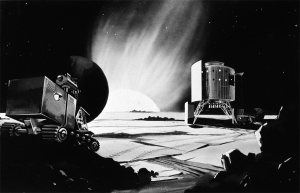
Image credit: Krafft Ehricke Papers / Space Global
Image source: NASM

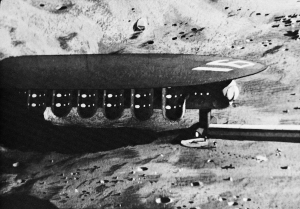
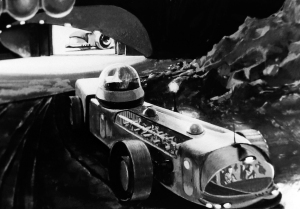


Selenopolis, named after Selene, Goddess of the Moon, is a lunar city-state that could exist by 2029. With a population of about 100,000, it contains all the comforts of “home” (Earth) — plus many features that we don’t have in the terrestrial environment.
Selenopolis is a network of “Quonset hut” – shaped “half tunnel” sections stretching across the lunar surface and covering about 100 square miles. Each section is several miles long, with internal dimensions of 3200 feet across at floor level, and 1600 feet height to the center of a curved ceiling. The sections are joined at dome-shaped intersections. The entire complex is laid out for expansion.
On the inside, each section is separated from the other by a solid but transparent “curtain”, because each section of the habitat represents a different Earth-like climate and season. Selenopolis embodies urban, rural, agricultural, industrial and resort areas, and the “weather” inside is controlled and simulated accordingly. In other words, normal atmosphere conditions for Earth are maintained, and the regional climates of Earth are simulated.
Real sunlight illuminates the interior. A system of mirrors reflects it through the ceiling. Since a lunar day is 15 Earth-dats long, some of the mirrors are colored to provide the same time-changes and sky colors that we experience on Earth, from morning to night, and from season to season.
Public utilities (water, power etc.) are sub-surface. There is also a sub surface lake.
Image credit: Krafft Ehricke Papers / Space Global
Image source: NASM

Christmas in Selenopolis: While some of the residents of the lunar city enjoy ice skating and other winter sports, other citizens are visiting the Hall of Astronauts museum, on the left. Others travel on the indoor monorail, seen on the right, visiting friends, or perhaps doing last-minute shopping.
Image credit: Krafft Ehricke Papers / Space Global
Image source: NASM
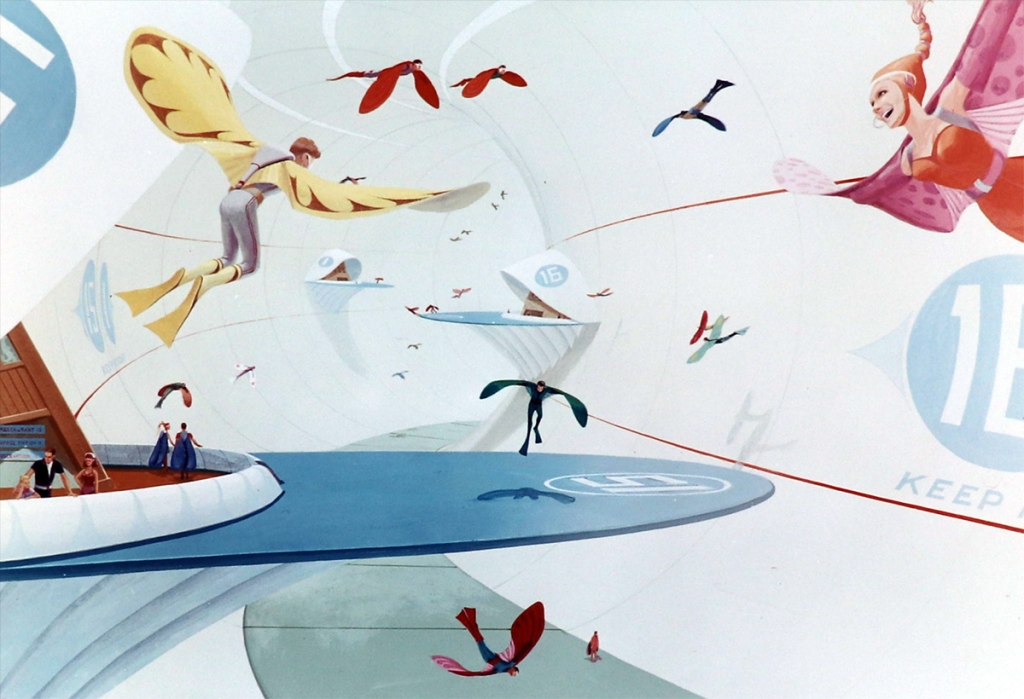
Image credit: Krafft Ehricke Papers
Image source: NASM
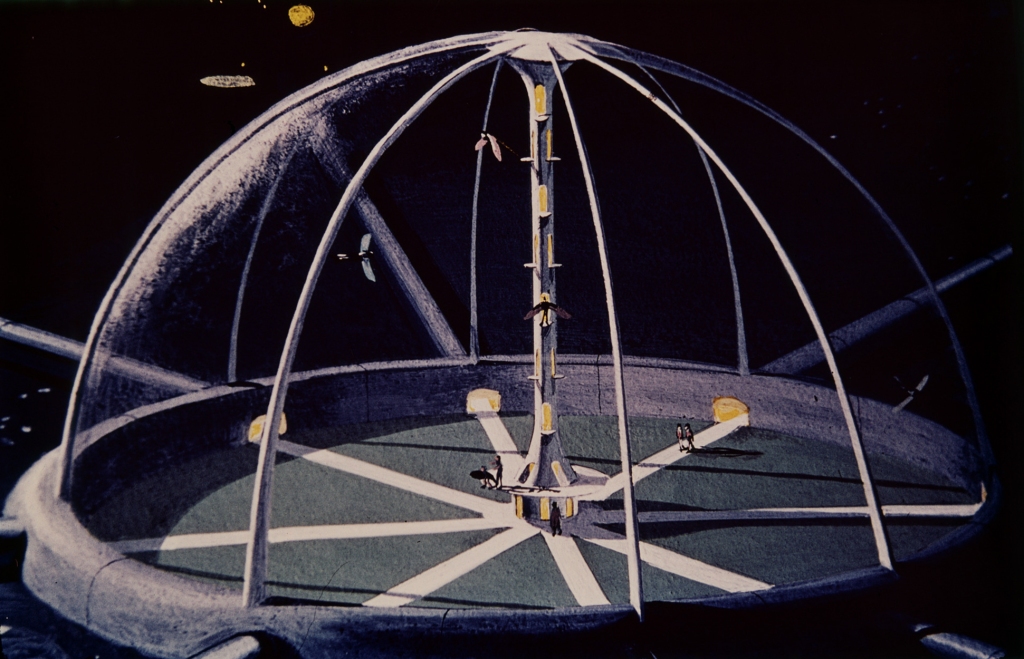
Image credit: Krafft Ehricke Papers
Image source: NASM
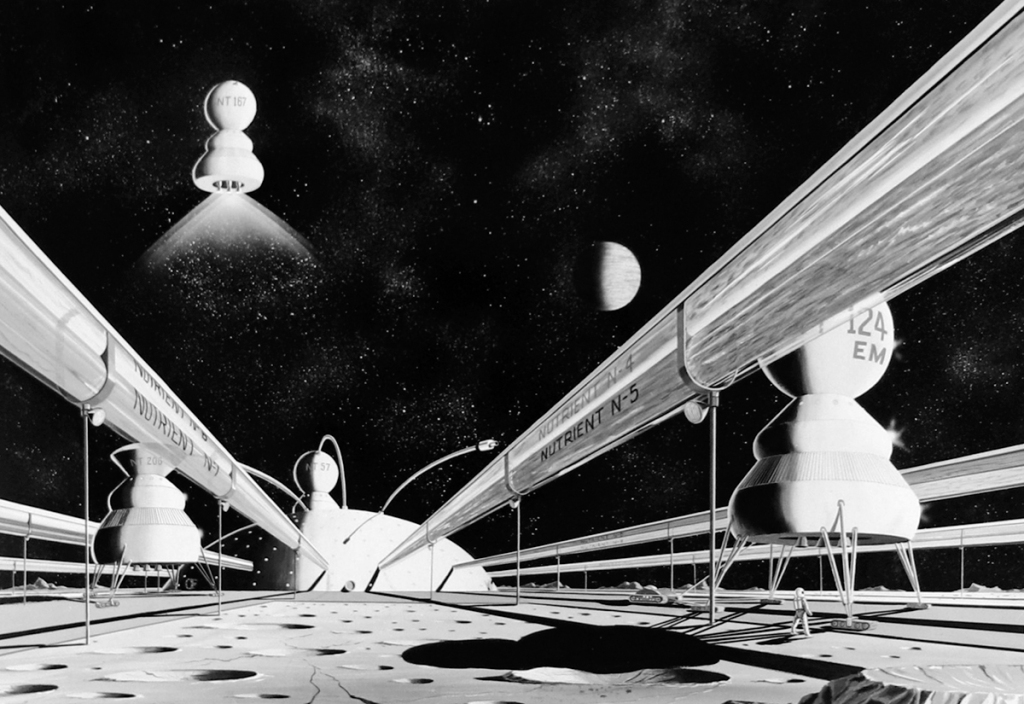
Image credit: Krafft Ehricke Papers
Image source: NASM




Space World
December 1964, VOL. A-14
Image credit: Douglas
Image source: Numbers Station




How re-usable ROMBUS-type launch vehicles can be applied to construction of a temporary lunar base (Project Selena).
Frontiers of Space is peppered with artwork from Douglas, including paintings by Don Charles and James Finnell. In the book, this section was illustrated with (pretty poor) knock-offs. Why? Who knows? These were the masters.
Image credit: Douglas
Image source: SDASM Archives